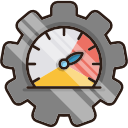Professional Time Management Apps Compared: Choose the Right Powerhouse
Chosen theme: Professional Time Management Apps Compared. Welcome to your practical, no-nonsense field guide for selecting tools that truly protect your time, sharpen your focus, and keep commitments visible—even when the day gets chaotic. Subscribe to stay in the loop as we refine this comparison with real-world workflows.


Asana and ClickUp excel at dependencies and multi-step workflows, while Todoist shines with natural language recurring tasks and quick labels. Things 3 favors elegant personal hierarchies with headings and checklists. OmniFocus adds powerful perspectives and review cycles for complex commitments. Which structure matches your brain?

Sunsama encourages deliberate daily planning, Motion auto-schedules tasks into open calendar slots, and Reclaim protects habits by automatically reshuffling them. TickTick and Microsoft To Do straddle list-first workflows with calendar views. Your choice hinges on whether you plan time explicitly or prefer flexible lists.

Templates in Asana and Notion kickstart repeatable projects, while Zapier, Make, and Shortcuts send tasks between apps without manual copying. Motion’s AI suggests optimal scheduling; Notion adds AI summarization; ClickUp automates checklist creation. Small automations remove friction and quietly raise the floor of daily efficiency.
Speed, Sync, and Reliability Across Devices
01
On a flaky connection, Todoist’s lightweight payloads often sync quickly, while Asana’s activity logs help resolve conflicting edits after reconnecting. Notion’s richer data sometimes feels heavier, though it continues to improve. OmniFocus offers rock-solid sync designed for trust, especially when contexts are mission critical.
02
Things 3 and OmniFocus keep capture and browsing reliable offline, preserving momentum on subways and flights. TickTick’s offline modes are practical for quick edits. When connectivity returns, well-designed diffing keeps changes intact. Offline resilience transforms downtime into planning time rather than frustration.
03
Global quick-add, email-to-task addresses, and voice capture reduce resistance when ideas strike. Todoist’s natural language is fast; Things 3’s Quick Entry with autofill is beloved on macOS; Slack shortcuts push tasks into Asana without context switching. Speed at the door equals clarity later.
Collaboration or Craft: Matching Apps to Work Styles
Asana and ClickUp handle multi-owner tasks, dependencies, and timelines that sales, product, and ops can see. Trello’s boards stay approachable for cross-functional work. Integrations with Slack and Google Calendar keep updates ambient. Visibility and shared accountability usually outweigh personal preference in these settings.
Collaboration or Craft: Matching Apps to Work Styles
Things 3, OmniFocus, and Todoist excel for personal mastery—rapid capture, thoughtful review, and flexible tagging over heavyweight workflows. If your calendar drives everything, Sunsama or Motion add clear time commitments. Personal systems thrive when they feel effortless, not bureaucratic.




Integrations and Ecosystems: Where Your Work Actually Lives
Calendar and email deep links
Sunsama, Motion, and Reclaim sync two-way with Google Calendar or Outlook to protect time. Gmail add-ons push emails into Asana or Todoist with back links. Calendar event links in tasks close the loop, ensuring your plan matches reality when meetings move.
Docs, notes, and knowledge integration
Notion connects tasks to pages, specs, and decisions, becoming a living knowledge base. OneNote and Evernote clips link to tasks for follow‑ups. Confluence, GitHub, and Jira integrations keep product work traceable. The best systems minimize context switching while preserving source material.
Portability, exports, and future safety
CSV exports, ICS calendar feeds, and open APIs enable migration and analysis. Avoiding overly proprietary structures lowers switching costs later. Periodic backups and a simple exit plan protect you from lock‑in. Your time data should remain yours, even if your tools change.
Field Notes: Two Real Weeks, Two Different Stacks
She plans the week in Sunsama, locks client blocks in Google Calendar, and captures actions in Todoist via email and mobile quick-add. Motion fills gaps with admin tasks. Results: fewer dropped follow‑ups, clearer boundaries, and reliable decompression time between flights.
Field Notes: Two Real Weeks, Two Different Stacks
Asana hosts the roadmap, dependencies, and sprint board; Slack updates trigger Asana rules; calendar holds stakeholder reviews. Personal next-actions live in Todoist for speed. The combination prevents private work from slipping while keeping team visibility intact during shifting priorities.


